The Importance of Exercise for Cancer Patients: What You Need to Know
ACSM recommends to cancer patients to aim for 150 minutes per week of moderate aerobic exercise with an additional two to three sessions of strength training.

Flash back to the days of childhood – the laughing, the running, the singing and most of all – the jumping. It seems like as children we have an endless supply of energy, and it’s probably why the jump rope was such a popular toy at recess. However, did you know that jumping rope acts as a great way to exercise? Yes, that childhood toy can actually be used as exercise equipment. In fact, more calories can be burned in shorter time increments while jumping rope as compared to other cardio options.1
When done properly, jumping rope can be a lower impact activity than jogging. How is this possible? Well, the key is to stay “high on the toes”2, according to Roger Crozier, who coaches a competitive jump rope team. Carrying a jump rope around with you can be a great addition to a workout at LA Fitness, or when you’re not in close proximity to a LA Fitness club. When choosing the type of jump rope to buy, go for beaded or plastic ropes. They tend to be more durable than cotton ones and move through the air faster, allowing a more intense workout.
The How-To
Before getting started with your cardio jump rope routine, make sure to measure your rope to ensure that it properly fits the height of your body. You can do this by following these easy steps:

Once you feel comfortable with a regular jump rope routine, there are plenty of fun challenges you can try to help up your game. Some fun variations to try, while increasing difficulty, would be the following:
Keep it fun, but make it challenging, for a rewarding cardio workout.
Curious about what other fitness methods are both fun and rewarding for your body? Why not submit a question to Ask A Trainer or ask a trainer* at a club? One of our certified Pro Results® trainers can help answer all your tough fitness questions. Your question may even be featured in an upcoming Ask Our Trainer video!
*Pro Results® Personal Training is subject to a separate agreement and an additional fee.
Sources:
ACSM recommends to cancer patients to aim for 150 minutes per week of moderate aerobic exercise with an additional two to three sessions of strength training.
Interested in a little friendly competition? Then it’s time to sign up for LA Fitness Group Leagues. Invite a friend to compete in basketball, racquetball, or volleyball today!
Achieve 6-pack abs this summer by following these 30 simple-to-follow ideas that will have you ready for the beach in no time!
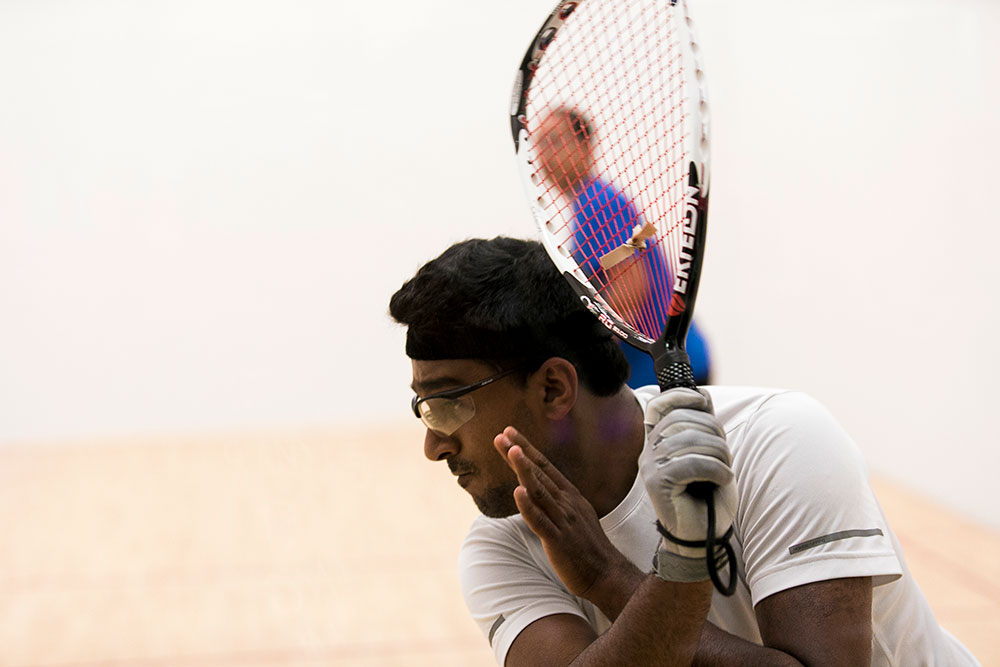
Who said fitness can’t be fun? Finding the right physical activity for you can make a world of difference. Did you know LA Fitness offers Club Leagues on top of Group Fitness classes? This means finding the right workout for you may simply be a matter of sampling all the club has to offer before finding where you fit in. For those of you who enjoy some friendly competition, consider signing up for Club Leagues racquetball. What makes the leagues so great is that they are broken down into different levels, allowing members of all skill sets to play in a fun and well-structured format.
The easiest way to sign up for a league is at the front desk of your local club, or you can sign up for a league online here!
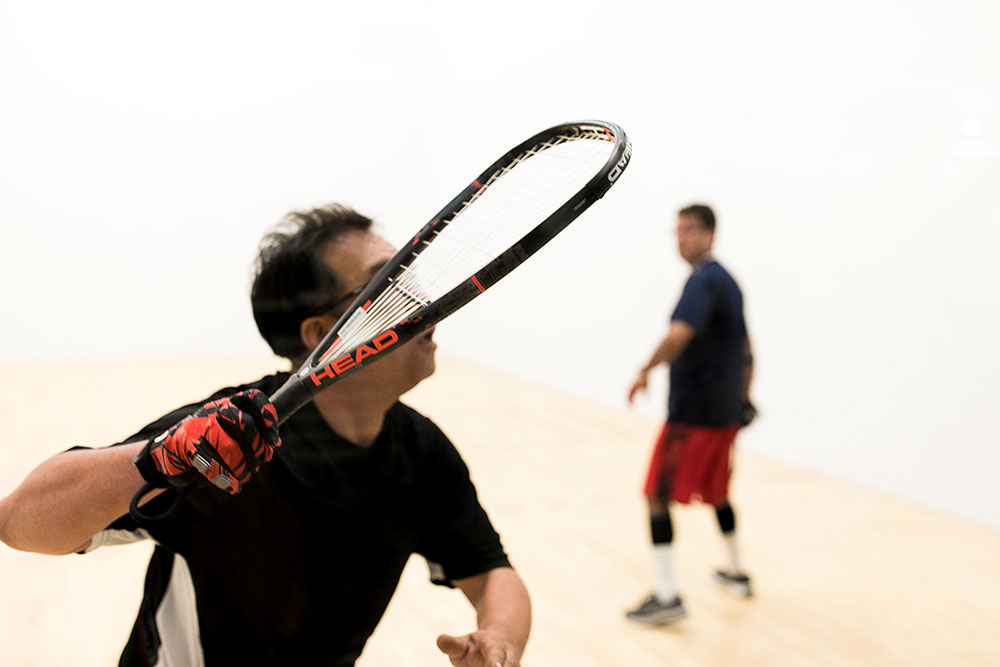
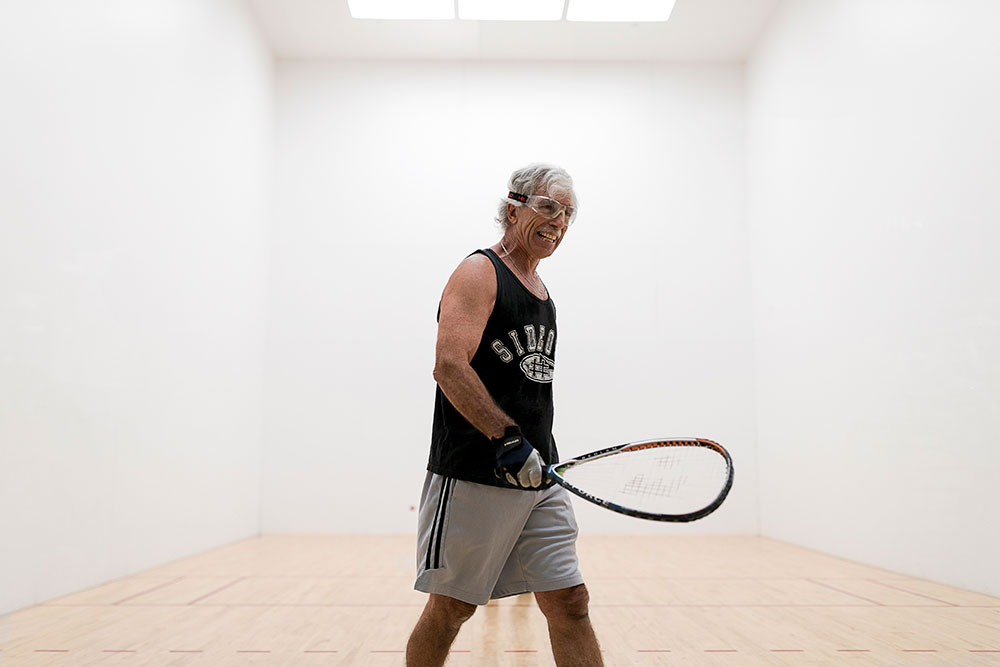
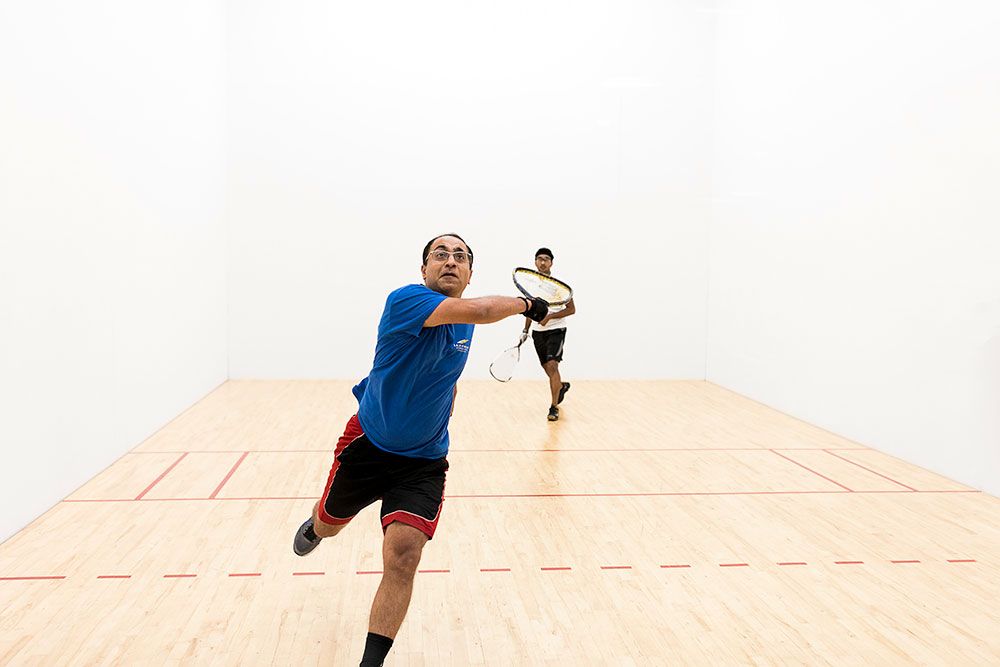

At the most recent racquetball Club League finals, at the Irvine Crossroads location, we spoke with the eight finalists who were competing for the sought-after title of Racquetball Champion. Four teams of two were matched against one another, playing best 2 out of 3. Whomever obtained a score of 11 first then moved on to the next round, until it was down to the final two: Rajesh vs. Ashish. Both men were neck-at-neck, sweat-laden, and refused to go down without a fight. Three rounds of well-played racquetball later, Ashish was victorious!
Ashish was first introduced to Club Leagues racquetball when he witnessed others playing at his LA Fitness. At the time, he was studying abroad for his Masters degree and was looking for ways to stay active and socialize. Ashish shared, “I got involved playing racquetball watching others play in LA Fitness. It’s [a] fast sport, which got me into [the] game. Joining the LA Fitness league definitely boosted my racquetball game.” Now, about five years later from when he first started competing, Ashish is a racquetball champion – way to go!
Participation in Club Leagues requires the payment of an additional fee. League availability and amenities vary by club.

ACSM recommends to cancer patients to aim for 150 minutes per week of moderate aerobic exercise with an additional two to three sessions of strength training.
Interested in a little friendly competition? Then it’s time to sign up for LA Fitness Group Leagues. Invite a friend to compete in basketball, racquetball, or volleyball today!
Achieve 6-pack abs this summer by following these 30 simple-to-follow ideas that will have you ready for the beach in no time!

LA Fitness Pro Results® Master Trainer, Geoff F., talks about how often you should be working out per week. What’s your guess? 1-2 times per week? 3-4 times per week? More? Watch below!
**Selected submissions will be featured on the LA Fitness blog and possibly other LA Fitness digital media entities & websites. By making a submission, you hereby grant LA Fitness a non-exclusive, perpetual, worldwide, irrevocable license to use and make copies of the contents of such submission for any purpose and in any medium whatsoever, and you hereby waive and relinquish any copyright or other intellectual property right you may have in the contents of such submission and your right to pursue any claim for LA Fitness’s violation of those intellectual property rights.
On this episode of ‘Ask A Trainer’ we speak with LA Fitness Pro Results® trainer Morgan C., and get her expert advice on how to properly maintain muscle mass.
On this episode of ‘Ask A Trainer’ we speak with LA Fitness Pro Results® trainer Morgan C., and get her expert advice on which machines offer a full body workout.
On this episode of ‘Ask A Trainer’ we speak with LA Fitness Pro Results® trainer Morgan C., and get her expert advice on whether or not strength training or cardio should come first when it comes to weight loss.
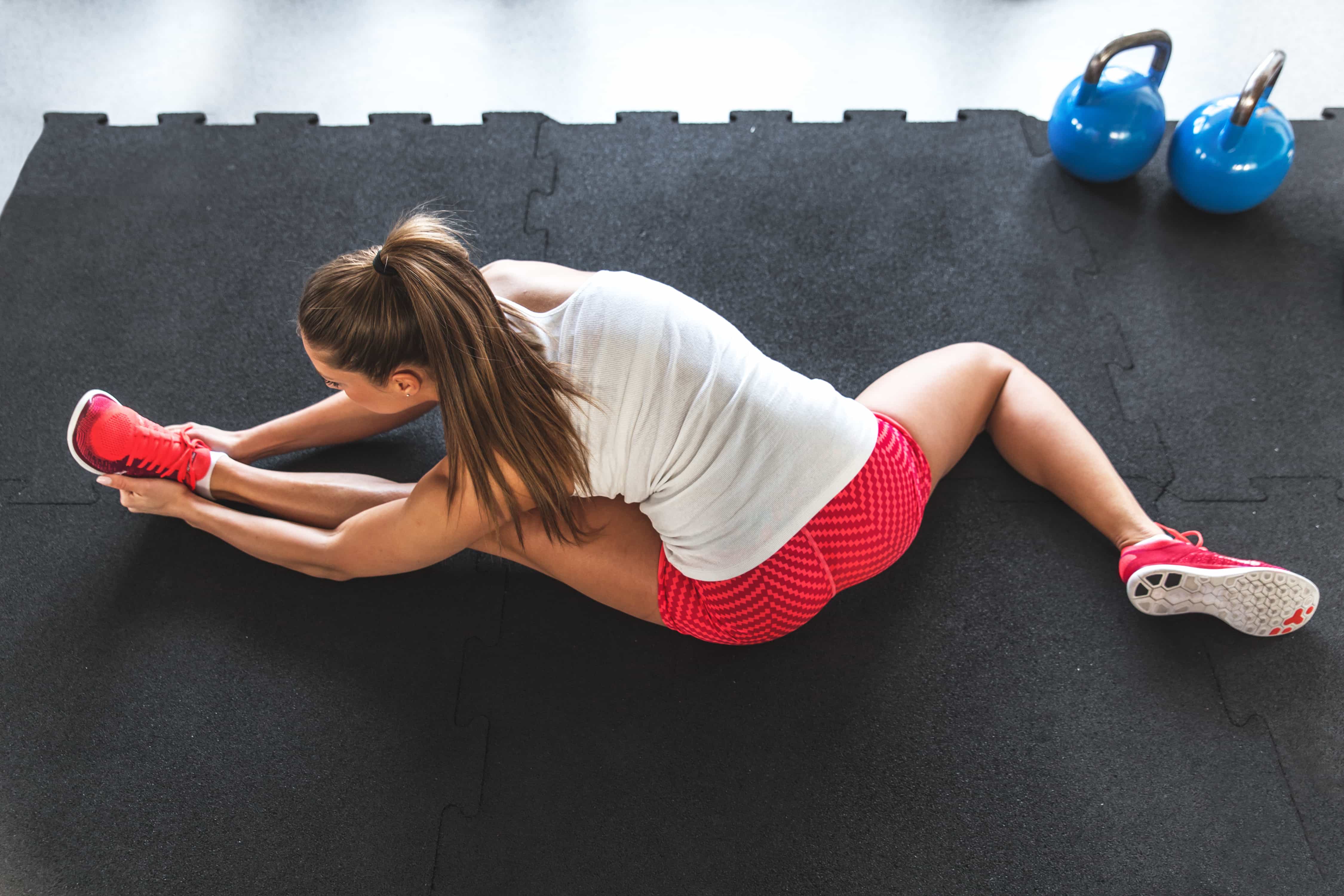
There’s a lot of talk out there about the importance of exercise and maintaining a proper diet to develop good health and fitness – but what about stretching? It may seem like a simple concept, which is why it tends to be overlooked; however, stretching can play an important role in your body’s overall wellness and performance.
Dynamic stretching – This type of stretching involves a full range of motion to engage all your muscles.
Suggested: Pre-Workout
Some examples include:
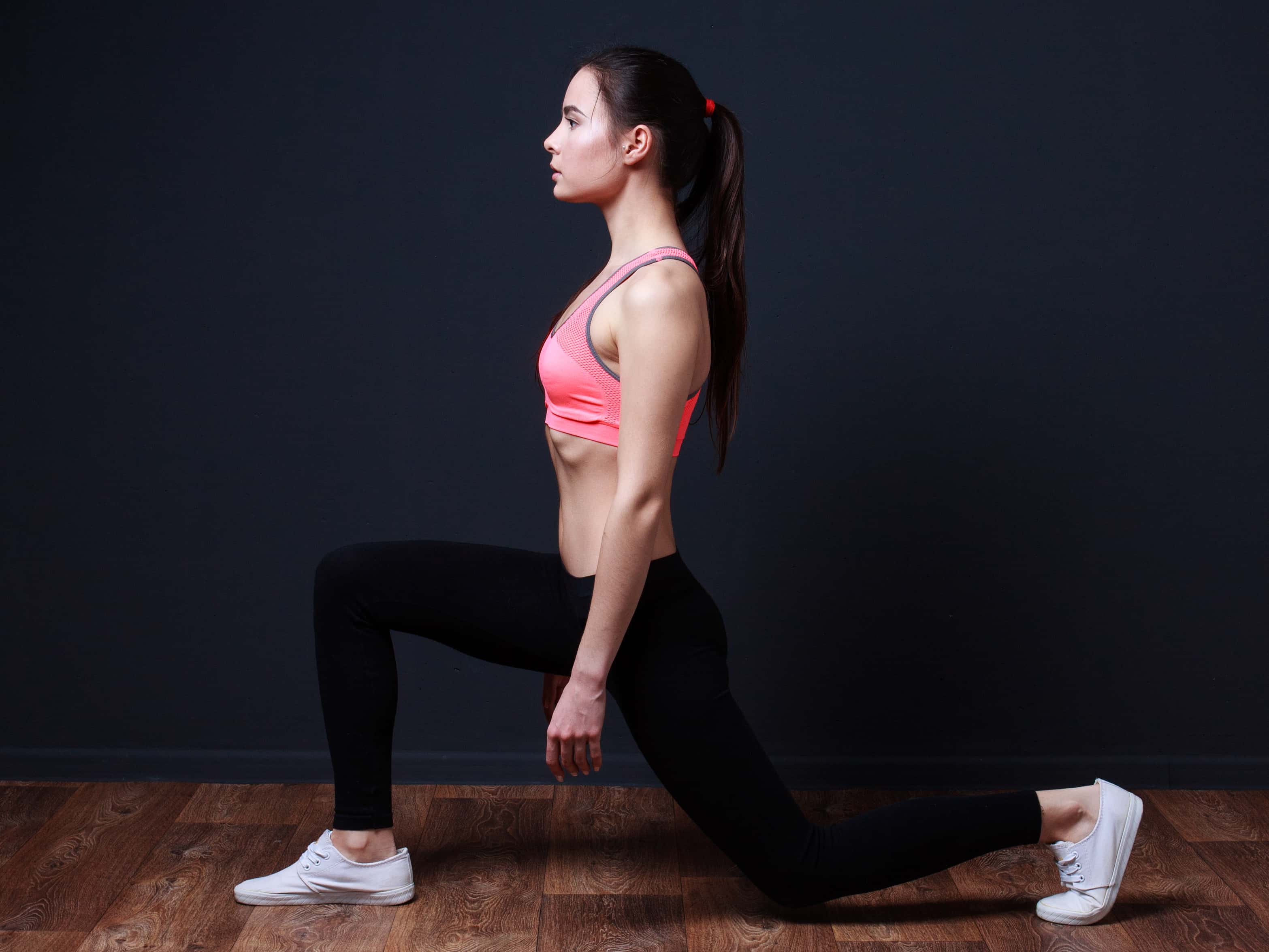
Static stretching – This type of stretching involves holding the muscle in a position to induce lengthening.
Suggested: Post-Workout
A few static stretches include:

It is suggested that dynamic stretching should be done before any workout or performance because it may help “increase muscle temperature and decrease muscle injury.”1 This specific type of stretching could help improve speed, agility and acceleration, and get the body where is needs to be before engaging in a workout. Granted, each person’s body is different, so if you find yourself questioning whether dynamic stretching before an athletic event is right for you, consult your physician.
Static stretching can be good for you post-workout because it can help “dull the nervous system,”2 calm the muscles down and give them a good cool-down. Plus, static stretching usually feels good! You may find yourself doing it midday, just to help loosen up tight muscles.
Stretching can help benefit the body in the following ways3:

Ballistic stretching has become a popular topic of conversation as a new form of stretching to add to your routine – but is it safe? While it remains popular among athletes, The American Academy of Orthopedic Surgeons advises against it for most people. Ballistic stretching consists of “bouncing movements to push your body beyond its normal range of motion.”5 It is not recommended because there is risk of straining or pulling a muscle. This type of stretching can also can damage the soft tissue around the joints, which could potentially develop into tendonitis.6
Want more? Check out our article Stretch Your Potential, Stretch Your Muscles for some added stretching info and tips!
Sources:
ACSM recommends to cancer patients to aim for 150 minutes per week of moderate aerobic exercise with an additional two to three sessions of strength training.
Interested in a little friendly competition? Then it’s time to sign up for LA Fitness Group Leagues. Invite a friend to compete in basketball, racquetball, or volleyball today!
Achieve 6-pack abs this summer by following these 30 simple-to-follow ideas that will have you ready for the beach in no time!


At 15-years-old, Julie I., of Irvine, CA, had a brain aneurysm while on a skiing trip with her family. She couldn’t lift her head or swallow. She could hear, but could not speak. Sitting in the hospital room to comfort Julie was her grandmother, Frances. The nurse informed her that her granddaughter would never speak again, and Frances’ reaction to that was hanging a sign on the hospital door that read: If you have something negative to say, don’t come in.
Three years later, not only was Julie able to speak, but she was a graduate of Mater Dei High School. Getting there, though, wasn’t easy. Doctors recommended putting Julie in an assisted living facility, but her family took her home and went to work, helping teach her how to do various things again. Not only did her family help, but fellow classmates, neighbors and parents of the kids she used to coach in soccer all rallied behind her, calling it Operation Julie.
For years, Julie would wake up, see her wheelchair and vow that by the end of the year she would walk independently again. Year after year she renewed that vow until she was able to walk with the assistance of a walker in 2000. Her strong-mindedness spilled over to all other aspects of her life. She wanted to go to USC, so she made it happen. She had always wanted to rush a sorority, and so she did. She wanted to experience life living in a sorority house, and would you guess – she did.
Julie shared with us how her workouts changed over the years and she became stronger. At first, she said she did mostly floor exercises with her physical therapist, since she had to learn, and train, her body to do things that once came naturally. She did a lot of core strengthening, balancing exercises, learned to sit-up, hold her head up, and countless other activities. Once she attended college, her physical therapy turned to walking practice.


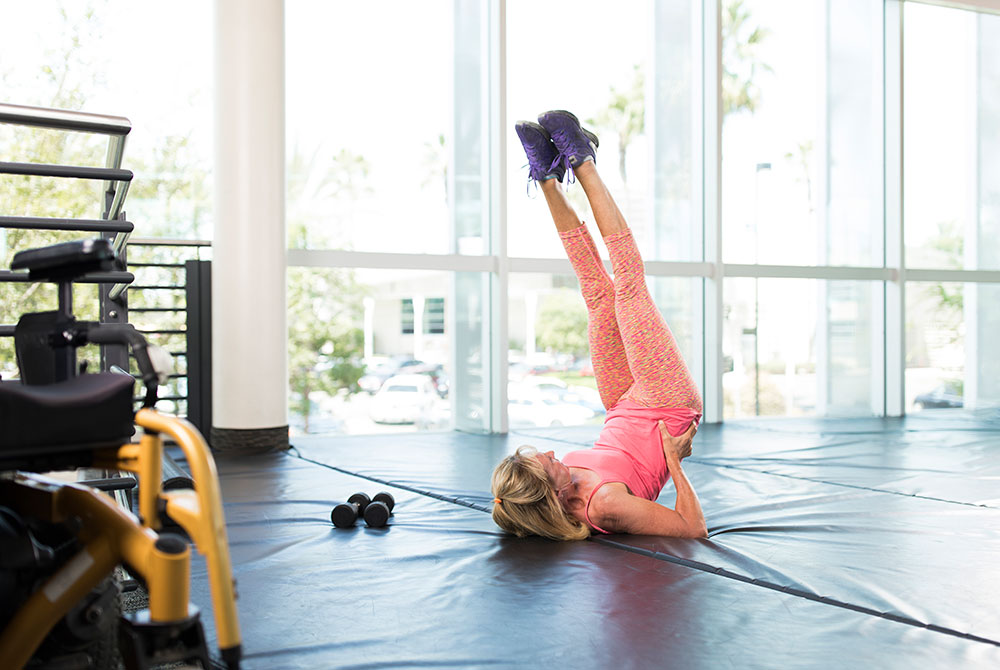
Once Julie graduated from USC, she moved back to her hometown of Irvine, CA, and once again, her workouts changed. Julie would go to the gym 3-4 days a week and do mostly cardio. When she was on the treadmill she would hold onto the front bars to keep her balance and she had learned how to use the bikes and weights, as well as do floor exercises, from her time spent in physical therapy. Julie explained that she went to the gym religiously for 26 years, improving gradually over time, and that her tremors almost completely disappeared and her flexibility improved.
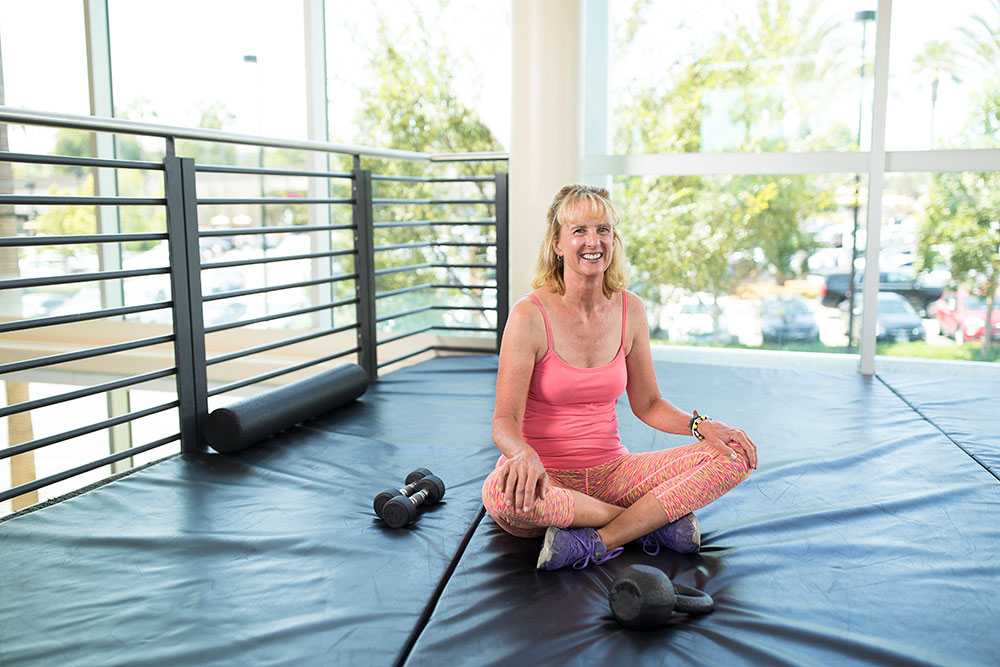
Julie now trains at LA Fitness in the mornings before work. Her and her dad have even participated in four MS150 Rides, a two-day fundraising bike ride to help raise money for MS (multiple sclerosis), spanning from Newport Beach to San Diego. She has a recumbent three-wheel bike. Now, at 52-years-old, Julie mostly exercises on the bike, stretches and strength trains with weights. Having overcome so much in her lifetime, Julie started a non-profit called SupportAbility, which awards high school seniors who have graduated despite tremendous personal obstacles.
Julie shared, “Thanks to the beautiful, friendly and immaculate gym, hard work and a routine I can write this.” We can’t wait to see what the future holds for this incredible woman. If you would like to donate to SupportAbility, and read more about this non-profit organization, please visit Julie’s website here.
*SupportAbility is not an affiliate of LA Fitness. This link will take you to an outside webpage, and any representations or warranties made therein are made by SupportAbility only, and not by LA Fitness.
Consult with your physician before starting a new fitness regimen.
For the past three decades, Jerry and Marilyn Hoagland have been playing racquetball together. This LA Fitness couple shares what's helped keep them young.
Life doesn’t always go according to plan, and sometimes that’s for the better. LA Fitness member, stuntwoman, and new mom Danielle G. shares her story of fitness triumph.
Find the exercise routine that’s right for you! Shayla W. struggled with finding a program that helped deliver the results she was looking for until she found Pilates by LAF®. This is her success story.
Be the first to know about exclusive
content, deals and promotions